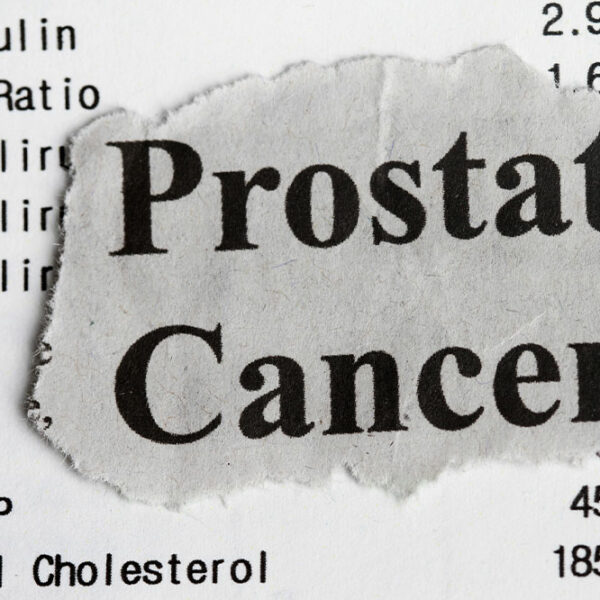Stages, and Ways to Manage Prostate Cancer
The prostate is a gland in the male reproductive system that produces a fluid that makes part of semen. When cells in the gland lose the ability to control their division, their mass outgrows and hampers the gland’s function, it is called prostate cancer. As the disease advances, the cells enter the systemic circulation and spread to other parts, called prostate cancer metastasis. Cancers affect the patient’s quality of life.

Stages of prostate cancer
The stage of the disease is determined based on the result of diagnostic and staging tests and the grade group. There are five grade groups from groups 1 through 5:
Stage I
Cancer cells are found within the prostate gland. It may be felt during a digital rectal exam or DRE or is detected by needle biopsy or in a sample of tissue removed during surgery for some other reasons. In this stage, the Prostate Specific Antigens (PSA) level is lower than 10, and the grade group is 1.
Stage II
The stage has three substages: A, B, and C.
Stage IIA
A tumor develops in one-half or less of one side of the prostate, or more than one-half of one or both sides of the prostate. The PSA level is between 10 and 20; the Grade Group is 1.
Stage IIB
The cancer is found in one or both sides of the gland. The PSA level is lower than 20 with the grade group 2.
Stage IIC
In this substage, cancerous cells are found in one or both sides. The PSA level is lower than 20, with the grade group 3 or 4.
Stage III
This stage has three substages— IIIA, IIIB, and IIIC.
Stage IIIA
Cancer is in one or both sides of the prostate. The PSA level is at least 20; the grade group is 1, 2, 3, or 4.
Stage IIIB
In this stage, the abnormal cells have spread from the prostate to the seminal vesicles or nearby tissue or organs, such as the rectum, bladder, or pelvic wall. The PSA can be at a higher level, while the grade group is 1, 2, 3, or 4.
Stage IIIC
Here, the cancer cells are found in one or both sides of the prostate and may have spread to the seminal vesicles or nearby tissue or organs. The PSA can be at any level, with the grade group being 5.
Stage IV
This stage has two substages, including A and B.
Stage IVA
The cancer is in one or both sides of the prostate and may have spread to the seminal vesicles, nearby tissues or organs, and/or lymph nodes. It doesn’t have a specific PSA level and grade group; it can be at any level.
Stage IVB
Cancer has spread to other parts, such as the bones or distant lymph nodes. Prostate cancer often spreads to the bones and other organs.
Metastasis of prostate cancer
Prostate cancer spreads in three ways:
Tissue
Cancer spreads locally by growing into nearby areas around its origin.
Lymph
The abnormal cells enter lymphatic drains and spread through the lymphatic system.
Bloodstream
From lymph nodes, they enter the bloodstream and spread, most often to the lungs, liver, and bones. These metastasized cells divide at their destinations, grow, and interfere with the functioning of the cells of host organs.
Prostate cancer treatment options
Active surveillance
This mode is for the patients who do not have signs, symptoms, or other related conditions or the patients who are diagnosed during screening. Diagnostic tests are run regularly to monitor the cancer progression, and treatment is started only after the onset of symptoms.
Surgery
It refers to the physical excision of tumors. This treatment option is advised only in severe cases where other treatments have failed to provide relief. Surgery options include open radical prostatectomy, radical laparoscopic prostatectomy, robot-assisted laparoscopic radical prostatectomy, and transurethral resection of the prostate.
Radiation therapy
This therapy uses high-energy radiation to kill cancer cells or prevent them from growing. There are four types that include external radiation therapy, hypo-fractionated radiation therapy, internal radiation therapy, and alpha-emitter radiation therapy.
Hormone therapy
Hormone therapy aims to remove, inactivate or block hormones from functioning to break their association with cancer progression. In prostate cancer, the targets are male sex hormones. The therapy includes Orchiectomy, Oestrogens, Luteinizing hormone-releasing hormone agonists, Antiandrogens, and androgen blockers.
Chemotherapy
Chemotherapy uses inhibitors that block the growth of cancer cells, either by destroying the cells or restricting their division. The solution enters the bloodstream and attacks cancer cells at every metastasized site.
Immunotherapy
This treatment option boosts direct or restores the patient’s immune system, using various methods to fight cancer. Sipuleucel-T is cell-based immunotherapy used to treat metastatic prostate cancer.
Targeted therapy
This treatment uses different substances to identify and attack specific cancer cells. Robot-assisted surgery, alpha-emitter radiation therapy, and targeted therapy are advanced prostate cancer treatments.
As science and technology advance in the healthcare industry, new treatments are under research; some are at the stage of clinical trials and they are expected to be approved in the coming years.





